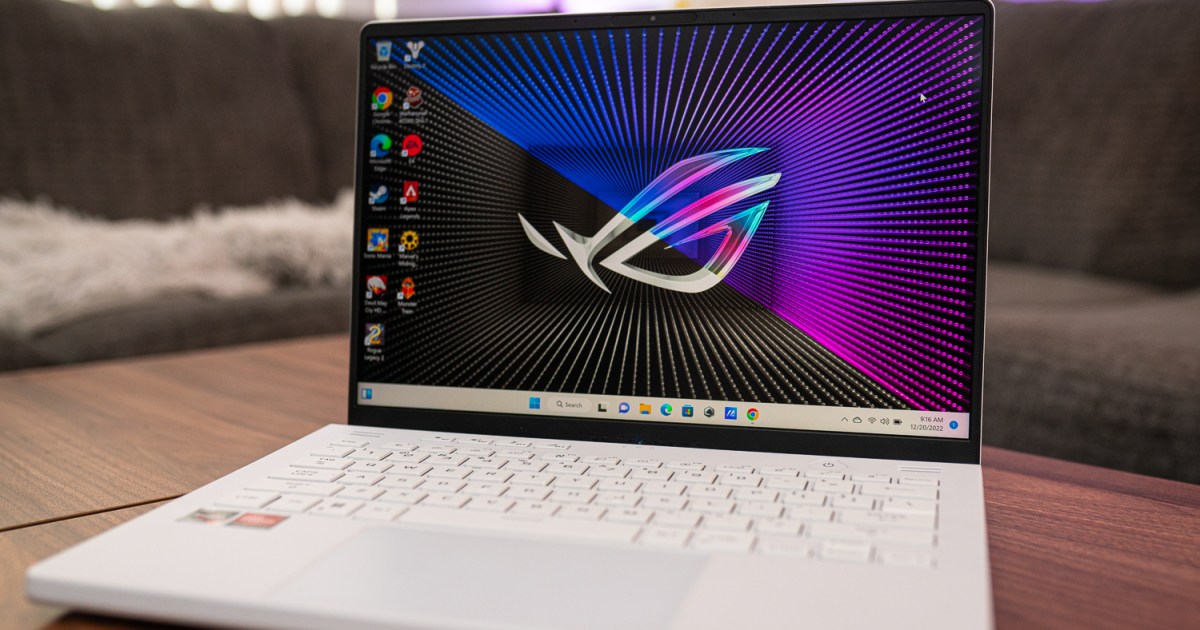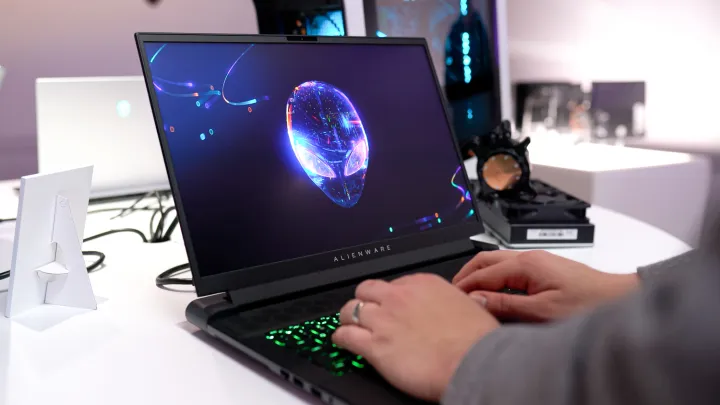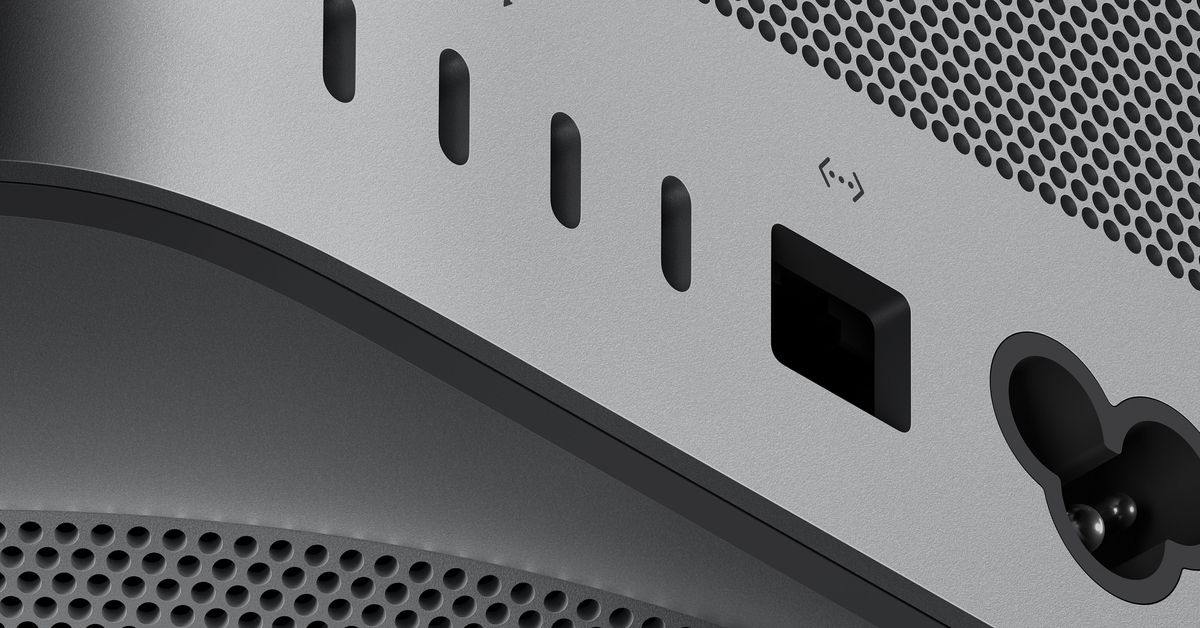Where in the world are all of AMD’s next-gen laptop GPUs?
AMD released a slate of promising laptop GPUs at the beginning of the year, but there have been shockingly few laptops sporting them.

 Jacob Roach / Digital Trends
Jacob Roach / Digital TrendsI honestly forgot AMD released next-gen RDNA 3 laptop graphics cards, and I wouldn’t be surprised if you did too. At the beginning of this year, the company announced a slate of next-gen graphics cards for laptops, promising they’d be out by February. The laptops — and trust me, there are only a few — came and went, the seasons changed, and nothing. We’ve had no more AMD laptops since.
I won’t pretend AMD has a strong hand in the best gaming laptops. It’s a place Nvidia has dominated and will likely continue to do so for generations to come, but the offerings for mobile AMD GPUs are in very short order this year. And that’s especially disappointing considering the performance AMD originally claimed when it announced its RDNA 3 laptop graphics cards.
Let’s back up for a moment. In January, AMD revealed the RX 7600M XT, RX 7600M, RX 7700S, and RX 7600S laptop graphics cards. The star child of the range, the RX 7600M XT, was said to have performance on the level of a desktop RTX 3060. I’m operating on limited data here — that’s kind of the entire point of this article –but some benchmarks show this card matching the performance of the RTX 4060 laptop GPU, like the one in the Alienware x14 R2.
Matching the competition from Nvidia is something AMD hasn’t been able to do over the past couple of generations, even if laptops like the Asus ROG Zephyrus G14 were surprise hits last generation (this year, AMD graphics are totally absent from this laptop). You’d think that competitive performance would mean more of AMD’s next-gen GPUs in laptops, but they just aren’t available.
 Jacob Roach / Digital Trends
Jacob Roach / Digital TrendsI’ve found a total of four laptops that you can buy in the U.S. with discrete RDNA 3 graphics. Asus has its Tuf Gaming A16 with the RX 7600S, Framework is offering its 16-inch laptop with an RX 7700S, and both the Alienware m16 and m18 offer the RX 7600M XT, but only when configured with an AMD CPU. If I’m missing something, feel free to email me. But the point remains that you’d have to go far out of your way to buy an AMD graphics card in a laptop this generation.
Even among the machines that offer these GPUs, you’d have to go out of your way. If you configure an Alienware m16 or m18 on Alienware’s website, for example, it will default to the RTX 4060 instead of the RX 7600M XT, even if you select an AMD CPU. And the Asus Tuf Gaming A16, despite receiving excellent reviews, is only available at Best Buy.
With the exception of the Framework Laptop 16, this is the same slate AMD announced in January. It doesn’t seem like any new laptops have gotten the RDNA 3 treatment, even among current partners like Alienware and Asus. Even Lenovo, HP, and MSI, who had all-AMD configurations in the previous generation, don’t have any new AMD graphics cards in their lineup.s
 Framework
FrameworkIt’s hard to say why. Nvidia dominates in gaming laptops, so it makes sense that Team Green would get priority for most laptop brands, but we’re more than half a year out from AMD originally announced its slate of laptop GPUs. And still, we just don’t have the laptops.
More recent rumors have suggested AMD is working on higher-end options to put in laptops — one leaker claimed up to an RX 7800M XT — but with so few options in the current lineup, I’m not holding my breath. It’s a shame, too. Some rumors have said the fabled RX 7800M XT could reach the level of a desktop RTX 4070.
Despite making inroads into laptops in the previous generation with solid budget machines from MSI, Lenovo, and Asus, along with the showstopping Zephyrus G14, AMD’s offerings this generation have fallen completely flat. At the very least, the company is starting to build out its desktop lineup, with the new RX 7800 XT and RX 7700 XT arriving on September 6.
Editors' Recommendations
AMD’s two new GPUs significantly undercut Nvidia Intel’s 14th-gen Raptor Lake refresh might be a major disappointment This AMD GPU could have destroyed Nvidia, but we might never see it Take a look at AMD’s limited-edition, Starfield-themed GPU AMD might admit defeat, but it’s for the bestJacob Roach is a writer covering computing and gaming at Digital Trends. After realizing Crysis wouldn't run on a laptop, he…
I’m a gaming laptop reviewer, and these are the only ones I recommend for college
The laptop market is a bit strange right now, which is particularly problematic if you're going back to school. We've seen some of the best gaming laptops ever this year, but many solid laptops for going back to school haven't been updated to the latest generation yet, making it hard to settle on one machine.
We've reviewed dozens of laptops in 2023, and there are only a select few that meet the balance of price, performance, and portability that students demand. If you're going back to school, these are the only three laptops you should even consider.
The high roller: Razer Blade 14
AMD next-gen CPUs might deliver the biggest upgrade in years
AMD already makes some of the best processors, but it looks like the next generation of Zen CPUs might give us even more to be excited about. According to early benchmarks and estimates, next-gen Zen 5 processors are expected to deliver a huge performance boost, reaching as high as 30%. Even leaving a little room for error, it seems that AMD might be about to deliver its most impressive upgrade in several years.
This thrilling bit of speculation comes from RedGamingTech. While it's still very early days, the YouTuber was able to provide some rough benchmarks. While he claims these come from a reputable source, it's a good thing to remember that we're still a long way off from seeing Zen 5 CPUs in the flesh -- most likely a year or more. As such, make sure to not take this information at face value.
Lenovo’s new 14-inch gaming laptop beats the ROG G14 in one key way
The ROG Zephyrus G14 has been a fan-favorite 14-inch gaming laptop these past few years, even with many recent competitors in the space. Lenovo's new Legion Slim 5 14, though, has one major advantage of the G14. Its screen.
The Legion Slim 5 14, now in its eighth generation, is receiving a major upgrade in its display, moving from a standard IPS to a 120Hz OLED. This more advanced panel technology can, of course, produce unbeatable contrast, thanks to the individually-lit pixels. At a max of 400 nits, the HDR performance in games should look rather nice too.

 BigThink
BigThink 



































